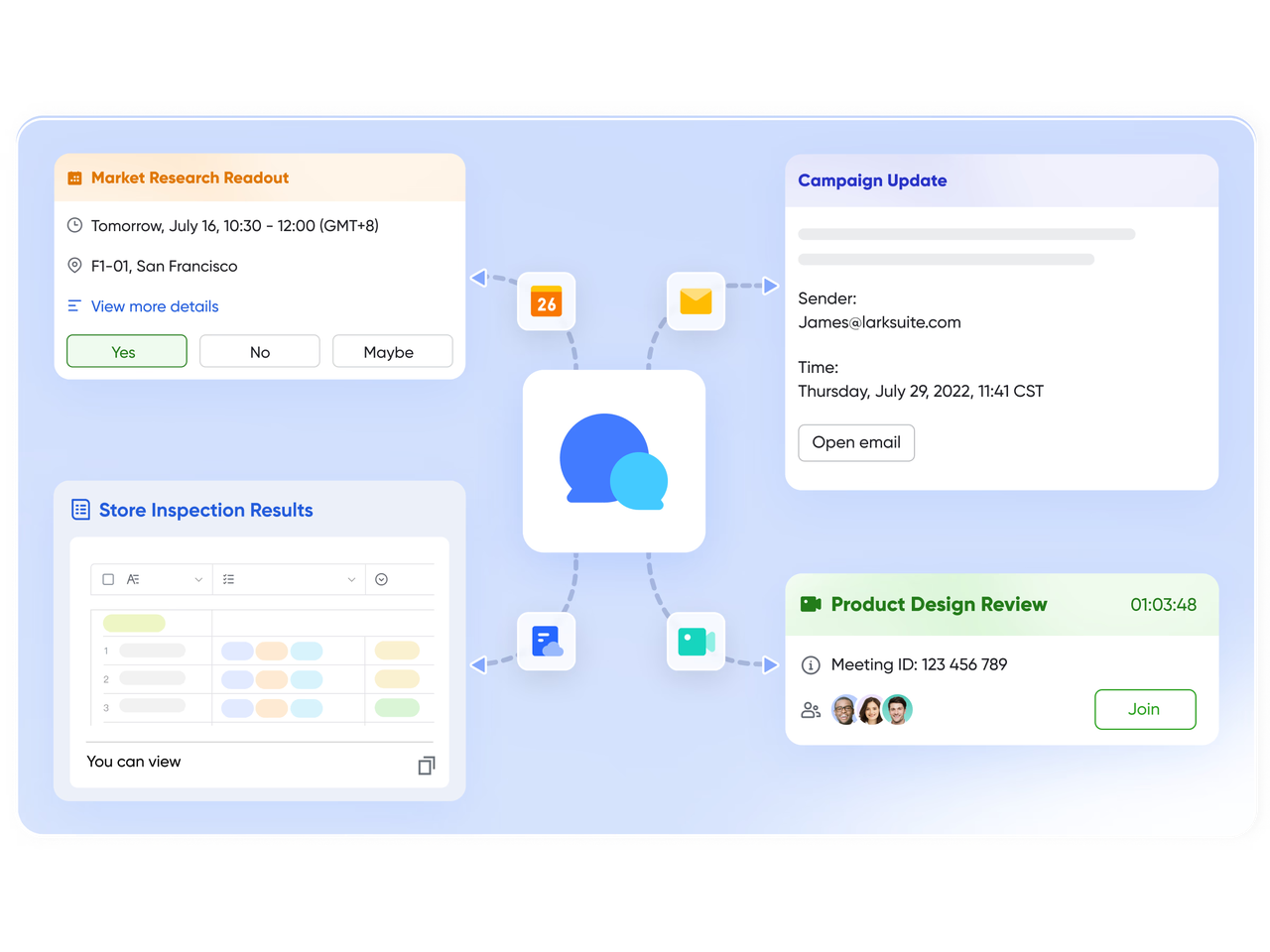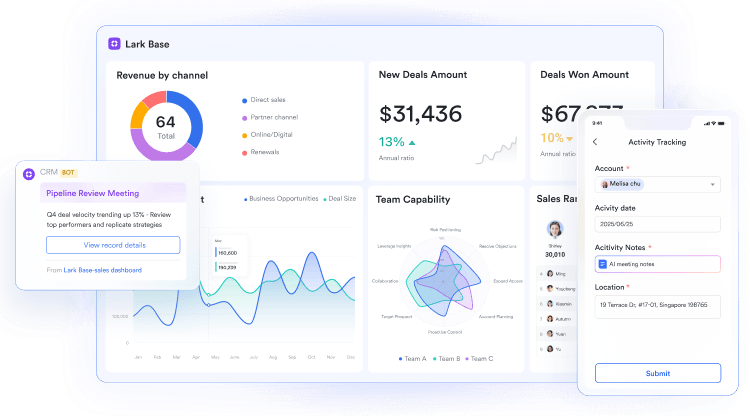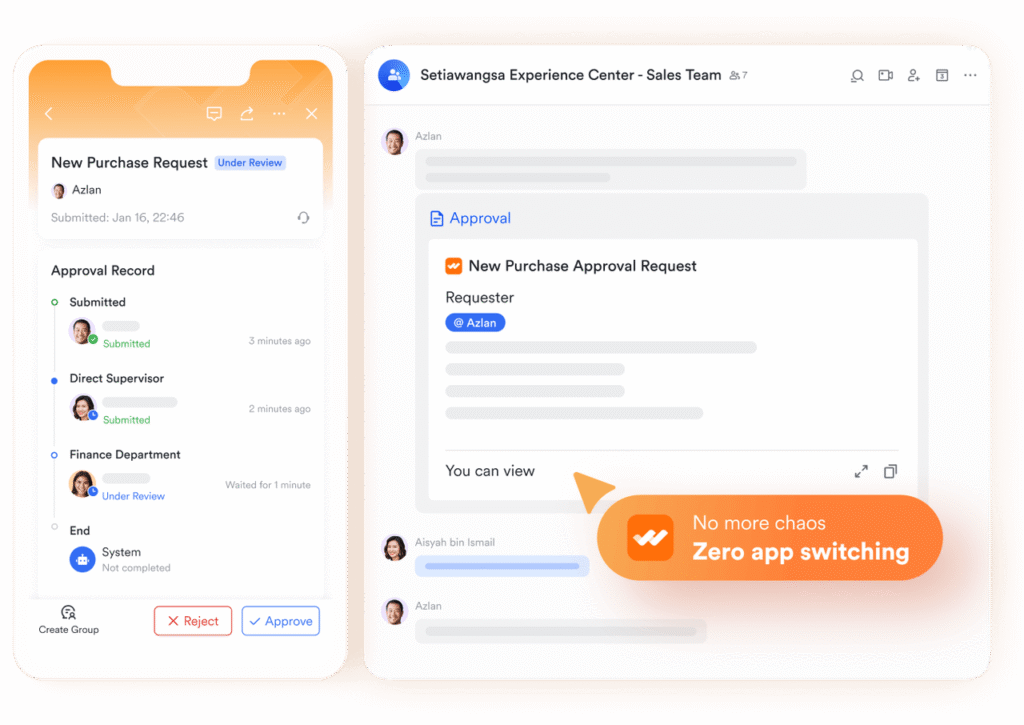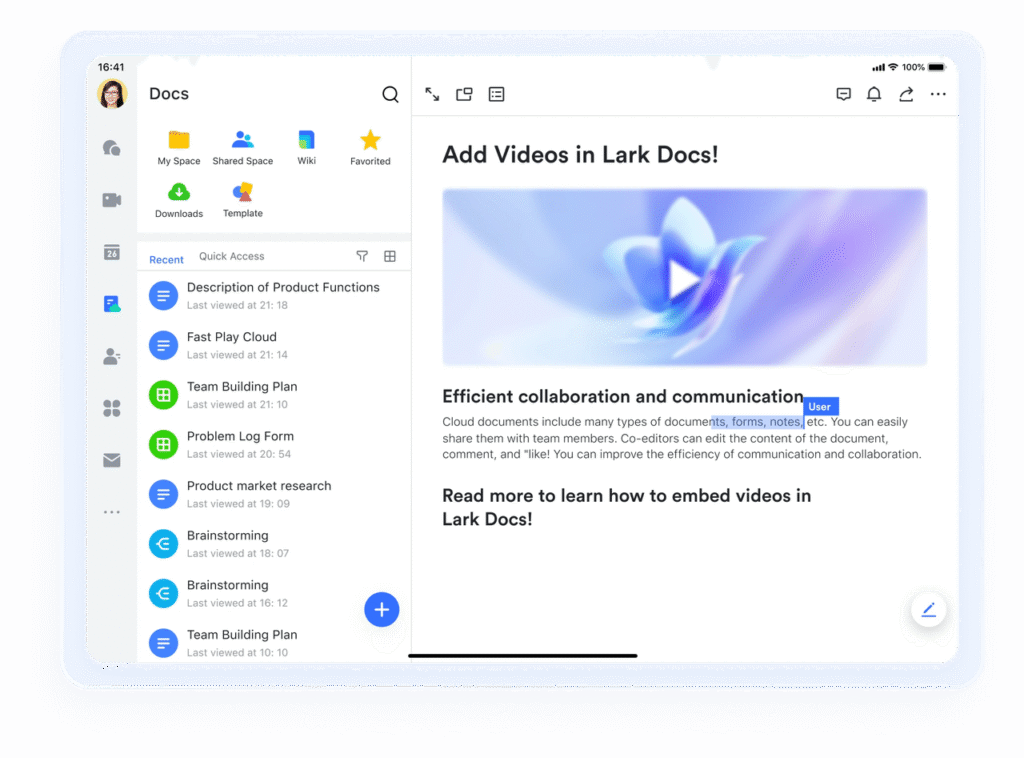Realstate
How Retail Managers Use Lark to Synchronize Store Operations and Inventory

Retail never slows down. Stock is always running out, schedules shift with no notice, and customer demands continue to rise. For managers, this means constantly juggling dozens of variables— inventory counts, supplier calls, staff coordination, and compliance with store processes and procedures.
The issue is that most retailers still rely on a hodgepodge of solutions: stock in spreadsheets, approvals in e-mails, WhatsApp groups for staff communication, and dusty binders for policies. The result is simply miscommunication, delays, and expensive mistakes.
That’s where Lark steps in. In today’s fast-paced environment, solutions like Lark have become one of the best project management tools for retail teams. But unlike traditional systems, it’s not just about task tracking—it’s about giving managers a connected workspace where everything from messaging to inventory databases lives in one place.
Now, let’s break down how retail managers are using the Lark ecosystem—Messenger, Base, Approvals, and Docs—to run smoother, smarter stores.
Coordinating staff seamlessly with Lark Messenger
Let’s be honest: retail floors are ever-changing. A cashier calls in sick, a delivery truck arrives sooner than expected, or a promotional display must be set up in under five minutes. Any minor disruption can spiral into the chaos of your store if communication is not done immediately.
With Lark Messenger in play, managers will have a central place to communicate store-wide. Managers can:
- Create group chats for each shift or department.
- Share pictures of display setups or where the product was placed.
- Send urgent updates company-wide, or across multiple stores at the same time.
Here’s a real-world example: over a holiday sales weekend, a regional manager used Messenger to keep three locations coordinated. One outlet ran out of a well-known popular item, and the supervisor took a picture of the empty shelf and posted it in a group chat. Minutes went by, and nearby locations identified available stock and made arrangements to transfer products. There were no frantic phone calls, no long emails, just speedy and transparent updates.
What Messenger provides is speed. Conversations, images, and documents flow in real time, reducing friction and keeping staff focused on what matters: serving customers.

Lark Messgaer
Managing inventory clearly with Lark Base

Lark Base
If there’s one thing retail managers lose sleep over, it’s inventory. Some products move faster than predicted, others pile up in the backroom, and tracking systems rarely talk to each other. This is where Lark Base is crucial.
Consider Base as a real-time inventory tracker with fields for SKU, supplier, reorder minimums, and quantities. Store associates directly update quantities after sales or delivery, so managers always have up-to-date counts.
Base doesn’t just track—it alerts. Automated rules generate low-stock alerts when items drop below set thresholds so that managers can act proactively.
Multi-store chains can set up store-specific access controls that allow first-level staff to view the inventory for their store only, keeping inventory clean and secure. For example, a clothing retailer is using Base to track its seasonal collections. Each jacket, dress, or accessory is recorded with stock level, supplier details, and restock date(s). If an article of clothing is low in stock and has a threshold, the application will notify the manager that the item is at risk of being out of stock. Rather than being surprised by a shortage during the weekly audit, they now take action right away. This is more than recordkeeping—it’s a more innovative way of running an automated workflow.
Simplifying restock requests with Lark Approval

Larkl Approval
Here’s the truth: the restock request process is often the point where efficiency goes to die. Paper forms get misplaced, emails get disregarded, and accountability gets lost in the pile. The delay isn’t just a loss of time; it is a risk of empty shelves, unhappy customers, and lost sales.
Lark Approval eliminates that bottleneck. Staff can submit a digital restock request with all of the required information—product ID, quantity, urgency, etc.—directly within Lark. The manager receives notification right away, reviews the submission, and approves or forwards it with a click.
And one of the best parts: Approvals can be auto-routed based on item category. For example, high-value items can go automatically to a senior manager for review; the floor supervisor can handle everyday replenishment. The whole process is speedier while not sacrificing control.
Picture this: in a grocery chain, a floor assistant notices that a premium organic tea line is nearly out. Instead of chasing signatures, they submit the request in Approvals. The manager reviews it within minutes and forwards it to procurement. What used to take days now happens in hours, ensuring products are back on shelves before customers even notice.
Keeping policies accessible with Lark Docs
There are policies behind every retail decision—returns, discounts, safety procedures, merchandising, to name a few. And the challenge is that policies can be old, dusty binders or long-buried email attachments, and it’s challenging to ensure the staff all stay on the same page.
The solution is Lark Docs—managers can create version-controlled documents that update in real time, and that every team member can access instantly.
Docs can even contain embedded training videos, meaning instead of just reading about how to put together a merchandising display, staff can watch a short demo, right inside the document. This helps turn training into something more interesting and applicable.
Take this example: right before the holiday rush, the head office updates the refund policy. Instead of reprinting binders or resending endless emails, managers update the Doc once and share it with all store staff. Everyone sees the same, most recent version on their devices.
Docs also connect naturally with other Lark tools. A manager approving a restock request can attach the relevant policy to the approval form. Or, in Messenger, a supervisor can drop a direct link to the latest safety guidelines.

Lark Docs
Wrapping it up
Retail managers thrive when complexity turns into clarity. The reality is that customer expectations will not get easier, and store operations will never slow down. With Lark, however, managers are not in reactive mode; they are armed with resilient tools built especially for how retail works.
From Messenger allowing teams to stay connected, to Base giving live insight into inventory levels through barcode scanning and low-stock alerts, to Approvals speeding up restocking with intelligent routing, and Docs including video-based policies—Lark is not just a digital tool. It is a retail-ready business process management software, fundamentally changing how managers lead their teams and serve customers.
When retail operations run smoothly behind the scenes, customers feel it on the floor. That’s what makes Lark not just helpful, but essential for the modern retail landscape.
-

 Tech1 year ago
Tech1 year agoHow to Use a Temporary Number for WhatsApp
-

 Business2 years ago
Business2 years agoSepatuindonesia.com | Best Online Store in Indonesia
-

 Social Media1 year ago
Social Media1 year agoThe Best Methods to Download TikTok Videos Using SnapTik
-

 Technology1 year ago
Technology1 year agoTop High Paying Affiliate Programs
-

 Tech11 months ago
Tech11 months agoUnderstanding thejavasea.me Leaks Aio-TLP: A Comprehensive Guide
-

 FOOD1 year ago
FOOD1 year agoHow to Identify Pure Desi Ghee? Ultimate Guidelines for Purchasing Authentic Ghee Online
-

 Instagram3 years ago
Instagram3 years agoFree Instagram Auto Follower Without Login
-

 Instagram3 years ago
Instagram3 years agoFree Instagram Follower Without Login



















